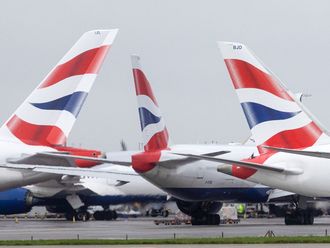Moscow: Russian President Vladimir Putin’s latest show of defiance against Western adversaries has deployed bulldozers, steamrollers and tractors to destroy hundreds of tons of illegally imported food in televised spectacles that some of his own countrymen are calling absurd and grotesque.
In a country where millions starved in the 1930s when the Soviet Union’s communist rulers forced collectivised agriculture on the peasantry, the Kremlin’s highly publicised enforcement of its year-old ban on European Union food imports is stirring protest among advocates of the poor and those with memories of Soviet-era shortages.
Since Putin’s August 6 decree ordering destruction of illegally imported foods seized by customs inspectors, Russian state television has shown track-wheeled bulldozers driving over and crushing tons of fruits and vegetables and leaving the mashed garbage rotting in the summer sun.
Amateur video posted on social media has also shown authorities from the Russian food safety agency, Rosselkhoznadzor, burning tons of meat intercepted at a border crossing from Belarus and mangling Hungarian goose meat found in a remote Tatarstan village grocery store.
Young women acting as patriotic enforcers have shown up at gourmet food stores in the capital sporting T-shirts with the message “Eat Russian” and slapping any offending produce with stickers reading “Sanctioned Product!”
Russian Agriculture Minister Aleksandr Tkachev has defended the destruction and called for speeding it up by deploying mobile food “crematoria” to border checkpoints. He also argues that destroying the seized food prevents corruption among agents who could abuse their position to sell the contraband or consume it themselves.
Kremlin spokesman Dmitry Peskov has signalled that the destruction policy is likely to continue in spite of public opposition. The images of burning and bulldozed food may be “unpleasant” for some, he said, but added that the seized foods are often of unknown origin, purity and freshness, potentially posing a health risk if consumed.
Russia a year ago banned the import of food and agricultural products from the European Union, in retaliation for the 28-nation alliance’s sanctions imposed on Russia for its March 2014 seizure and annexation of Ukraine’s Crimean peninsula. The United States, Canada, Australia and Norway are also subject to Moscow’s import ban but had much smaller shares of the Russian market than did their European Union allies.
On Thursday, Russian Prime Minister Dmitry Medvedev announced that the Russian food import ban had been extended to Albania, Montenegro, Iceland, Liechtenstein and Ukraine.
Russia’s Sputnik news agency reported this week that the food import ban has cost European farmers at least $6 billion (Dh22 billion), according to the agricultural union Copa Cogeca. It also reported an Austrian economic institute has projected losses as high as $114 billion for the Western bloc’s economies if the sanctions stay in place through January 2016 as enacted.
In the absence of such high-end foods as Serrano ham from Spain and Parmesan cheese from Italy, smugglers have been trucking produce through Belarus and relabelling it before crossing into Russia. Rosselkhoznadzor reported confiscating 73 tons of peaches marked as coming from Turkey but found to have been grown in a European Union state. Three tons of German cheese labelled as Russian domestic product was seized in St. Petersburg and destroyed in a bonfire last week.
The waste of at least 350 tons of seized food in the past week, by the food safety agency’s tally, was likely meant to underscore the government’s intention to better enforce the import ban and remind Russians of the pain being inflicted on Western trade partners as a consequence of their sanctions on Russia. But the showy acts of destruction have had a mixed reaction.
An online petition created last week by Muscovite Olga Saveleva has drawn more than 340,000 signatures backing its demand that the seized food be given to the poor. The number of Russians living below the poverty line has climbed to 23 million over the past year because of the rouble’s shrinking value — in part due to the European and US. sanctions — and the fall in global oil prices on which Russia depends for more than half of its revenue.
Small demonstrations have been staged in recent days against the wasteful handling of seized food by activists in St. Petersburg, and on Thursday, the Consumer Rights Protection Society challenged the August 6 decree in court.
The independent rights advocates urged the Supreme Court to be “guided by the law and not political expediency” in deciding whether the destruction order violates Russians’ civil rights, the Interfax news agency reported.
Some of Russia’s usually conformist state-run media outlets have pushed back against the burning and crushing of foods that can be tested to determine whether they are edible or not.
A commentator for Moskovsky Komsomolets said the government’s destruction of food showed “clear contempt” for public opinion and the indelible imprint left on the psyche of many Russians from the million-plus deaths suffered during the World War II siege of Leningrad.
The business daily Vedemosti said the high-profile destruction served only to “show [the West] our attitude, deprive ourselves of their food and then go and bury it.”
In an editorial, the Moscow Times observed that “starvation and deprivation weren’t abstract concepts to Soviet people — even privileged Soviet people — just a couple of generations ago.”
The English-language daily suggested that the destruction was being publicised mostly “for spectacle.”
— Los Angeles Times











